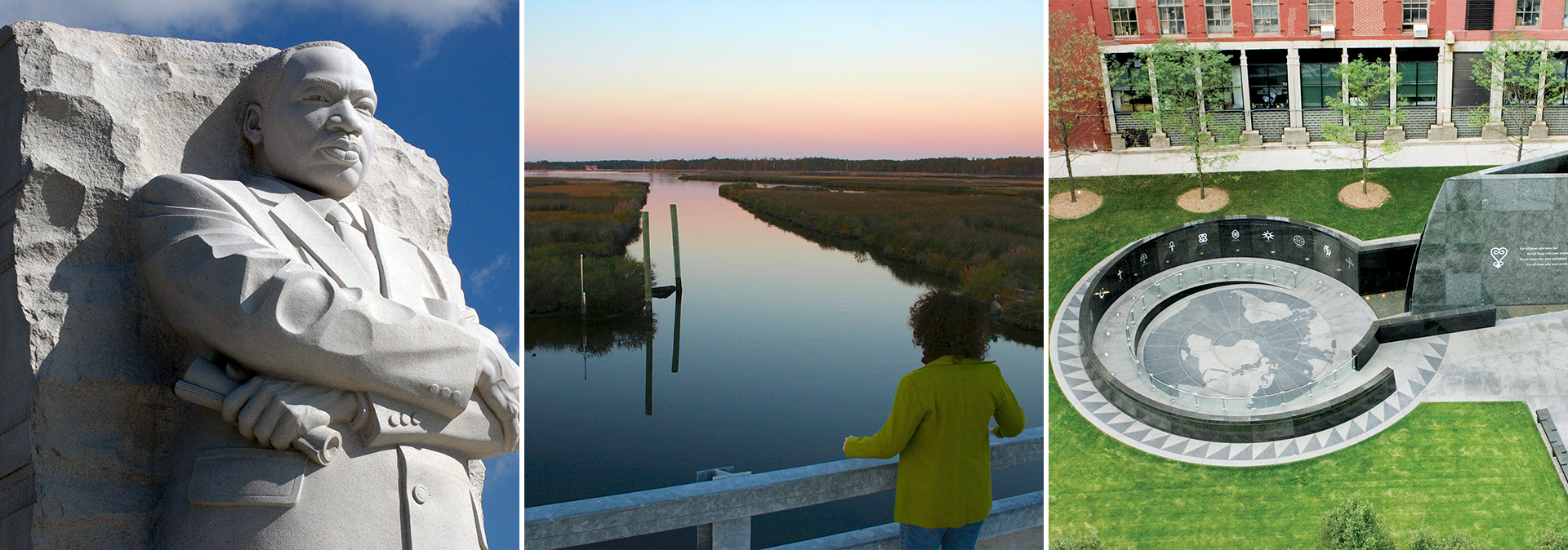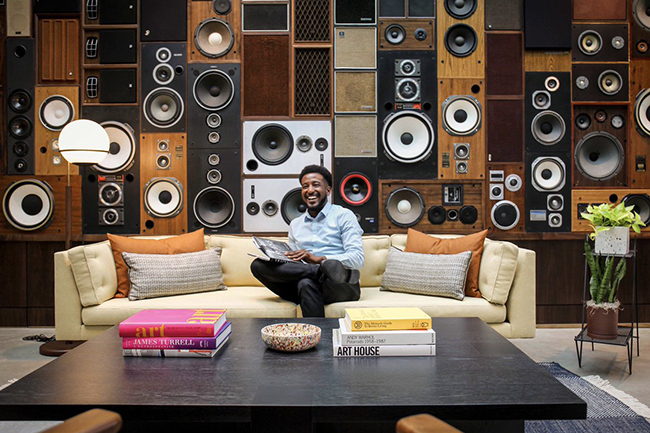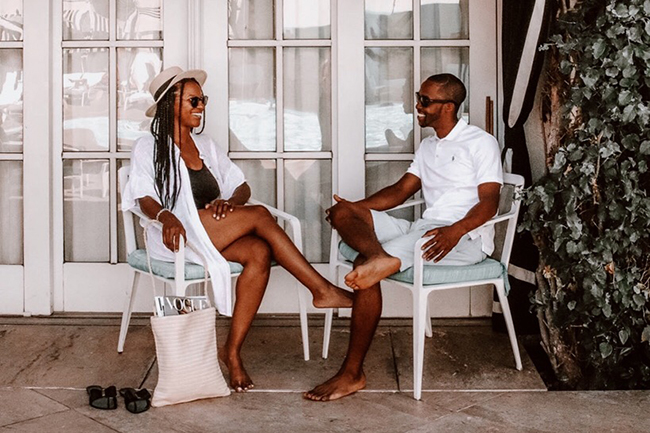Heritage travel – once a niche segment focused mostly on retirees interested in genealogy – is rising in popularity as more people seek a deeper connection to the persons and places of their past. This February, as many Americans explore ways to honor Black History Month, they may want to consider traveling, whether they’re exploring their own heritage and culture or learning about someone else’s.
We’ve identified 10 popular tourist destinations that hold some of the country’s most impressive and accessible museums, memorials, monuments, events and more dedicated to black history and culture. These destinations are ideal for bringing friends or family together to visit someplace new or return to a favorite spot with a new sense of purpose.
Of course, learning about history isn’t limited to a single month. Use these below destinations as a guide to plan a trip when the timing works for you. And in the meantime, consider becoming a tourist in your own town; what you discover may surprise you.
Charleston, South Carolina
African Americans have shaped Charleston’s history and culture, leaving an ongoing legacy of language, food, music and art. From the arrival of the first slave ship at Sullivan’s Island to the start of the Civil War at Fort Sumter, Charleston offers an important glimpse into the past.
Things to Do:
- Visit the African Passages museum exhibit at Fort Moultrie on Sullivan’s Island, once the point of entry for nearly half of enslaved Africans coming to America.
- See the evolution of the Old Slave Mart Museum, where enslaved Africans were once auctioned to plantations across the South. After the Emancipation Proclamation, the building became housing for African Americans, an auto repair shop and finally, one of the country’s first museums of African American history.
- South Carolina was the first state to secede when anti-slavery presidential candidate Abraham Lincoln was elected, catalyzing the nation’s deadliest war. A short boat trip along Charleston’s harbor stops at Fort Sumter, where the first shots of the Civil War were fired.
- Take a day trip to Hilton Head Island to visit Mitchelville, a small town that was once the country’s first freedmen’s community. Escaped slaves – then considered “contraband of war” – formed a self-sustaining, self-governing village. Take a Gullah Heritage Tour and visit Mitchelville Freedom Park. If there’s time for a detour on the way, stop at St. Helena Island to learn about the Penn Center, one of the nation’s first schools for freedmen.
Where to Stay:
- The Homewood Suites by Hilton Charleston Historic District puts guests just off King Street, home to many of Charleston’s best boutiques, restaurants and bars. Enjoy a daily free hot breakfast, heated outdoor pool and a complimentary evening social Monday through Thursday.
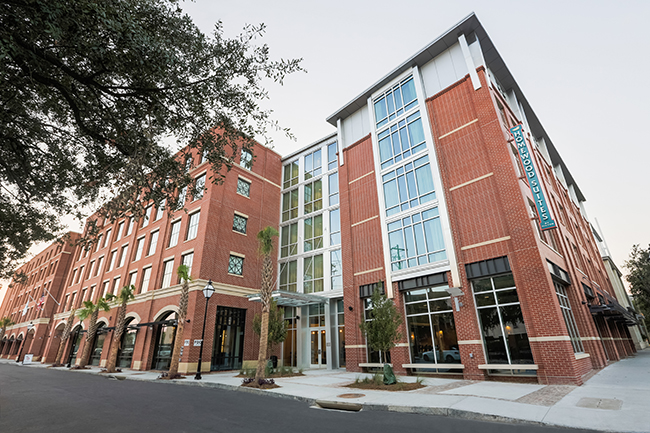
Homewood Suites by Hilton Charleston Historic District
Montgomery, Alabama
As the birthplace of the civil rights movement, Montgomery offers countless ways to honor the legacy of civil rights leaders such as Rosa Parks and Congressman John Lewis.
Things to Do:
- The National Memorial for Peace and Justice is the first national memorial to victims of lynching, with 800 steel monuments suspended from the structure’s ceiling. The accompanying Legacy Museum: From Enslavement to Mass Incarceration, built on a site where enslaved people were once imprisoned before auction, now explores the history of racial inequality in America.
- Located on the site where she was arrested in 1955, the Rosa Parks Museum honors the legacy of the civil rights leader. Just around the corner is the Freedom Rides Museum, housed in the building that was once the Montgomery Greyhound Station, where a group of freedom riders were attacked as they stood up against segregation.
- About 50 miles outside of Montgomery, stop in Selma to cross the Edmund Pettus Bridge, where police assaulted civil rights leaders who peacefully marched for voting rights. If your trip falls near the end of February, don’t miss the annual Bridge Crossing Jubilee.
Where to Stay:
- Most historical sites are within walking distance of DoubleTree by Hilton Montgomery Downtown, which boasts a contemporary fitness center, business center, peaceful outdoor terrace garden and on-site restaurant and bar.
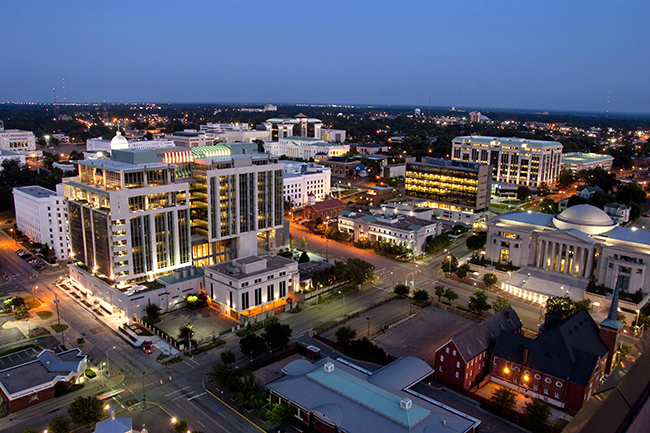
DoubleTree by Hilton – Montgomery
Memphis, Tennessee
With Beale Street as its cultural center, Memphis has been the site of major moments in African American history. Visit the city that brought the blues to national and global significance.
Things to Do:
- The Beale Street Historic District is one of the birthplaces of the blues, where artists such as B.B. King, Louis Armstrong and Muddy Waters shaped the “Memphis Blues” style. With more than two dozen bars and regular street performances, you can enjoy live music seven days a week.
- If you haven’t had enough of the music scene, visit the many museums showcasing the city’s global influence: The Blues Hall of Fame, Memphis Rock ‘n’ Soul Museum, Stax Museum of American Soul Music and the Memphis Music Hall of Fame.
- Built around the former Lorraine Motel, the site of the assassination of Martin Luther King Jr., the National Civil Rights Museum traces the civil rights movement over five centuries of American history.
- The Slave Haven Underground Railroad Museum takes visitors back to the pre-Civil War era. Once the Burkle Estate and a stop on the Underground Railroad, the museum is filled with secret passages and trap doors used by enslaved people seeking freedom.
Where to Stay:
- The Central Station Memphis, Curio Collection by Hilton puts visitors in the heart of the South Main Arts District, where many musicians launched their careers. From piping The Central Station’s daily playlist through custom designed, in-room speakers to the house DJ spinning at a booth designed from an old church organ, the hotel pays homage to its music roots and offers guests an authentic, immersive Memphis experience. The hotel is surrounded by vintage music shops, restaurants and studios, giving music-lovers the perfect setting to experience the Home of the Blues.
Washington, D.C.
The nation’s capital is home to major milestones in African American history, from the Emancipation Proclamation signed by President Lincoln in 1863 to the March on Washington led by Martin Luther King Jr. a century later.
Things to Do:
- At the National Museum of African American History and Culture, reflect on more than 400 years of history with artifacts such as Harriet Tubman’s hymnal and Emmett Till’s casket. As you continue up the escalators, view cultural relics like Muhammad Ali’s boxing headgear, Michael Jackson’s fedora and Michelle Obama’s Tracy Reese dress. After working up an appetite wandering the museum’s six floors, visit the Sweet Home Café, which serves traditional and locally sourced African American recipes.
- Just off the National Mall, the Martin Luther King Jr. Memorial commemorates the leader of the civil rights movement with a 30-foot statue of his likeness carved into the Stone of Hope. From there, walk to the Lincoln Memorial to find the inscription indicating where King stood to deliver his famous “I Have a Dream” speech in 1963.
- Across the Anacostia River, visit the Frederick Douglass House, where the abolitionist, writer, orator and former slave spent his last 17 years fighting for justice and equality.
- Once known as “Black Broadway,” the historical Shaw neighborhood was once home to musicians like jazz legend Duke Ellington, whose memorial sits outside the Howard Theatre. The Lincoln Theatre, another cultural center of the neighborhood, held performances from acclaimed artists such as Ella Fitzgerald, Billie Holiday and Louis Armstrong.
Where to Stay:
- Visit these sites and more from Hilton Garden Inn Washington D.C. Downtown, which is within 2 miles of the U.S. Capitol, White House and Smithsonian museums. Guests can enjoy free Wi-Fi, an indoor pool and fitness and business centers.
- Alternatively, visitors can enjoy Washington’s premier shops, dining and tourist locations from their stay at Conrad Washington DC. With inspiring views of downtown, this luxury hotel offers a rooftop bar, signature restaurant, art installations and the elevated service of the Sakura Club.
Extend Your Trip:
- Extend your stay with an overnight trip to the Harriet Tubman Underground Railroad Byway. This self-guided driving tour highlights significant places in Tubman’s life along 125 miles of Maryland’s Eastern Shore. There are more than 35 stops, but the Harriet Tubman Underground Railroad State Park and Visitor Center is a great place to start, with maps and exhibitions on Tubman’s life and heroism. As you drive, take in the scenic views, wildlife reserves and charming seaside towns like St. Michaels.
- Where to Stay: The cozy Hampton Inn by Hilton Easton is less than 30 miles from the Harriet Tubman Visitor Center. Before a long day of sightseeing, guests can enjoy a free, hot breakfast with healthful options, then explore Easton’s downtown area, with antique shops, art galleries, a farmer’s market and excellent seafood.
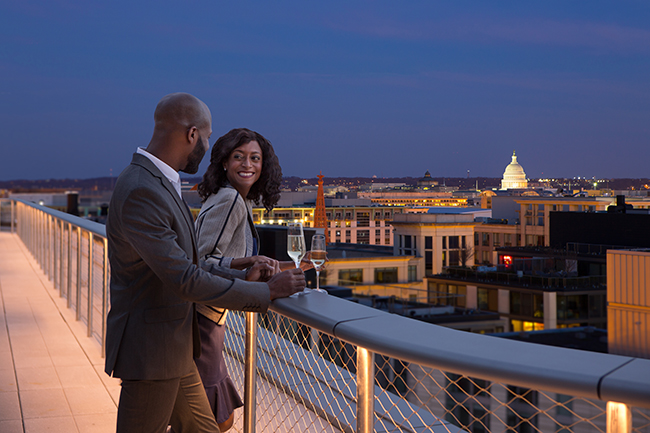
Conrad Washington DC
New York, New York
New York City has long been at the forefront of cultural and social justice movements. From the enslaved men that built the city when it was called New Amsterdam under Dutch rule to the Harlem Renaissance in the 1920s, do not miss the deep history of the nation’s most populous city.
Things to Do:
- Located in the heart of lower Manhattan, the African Burial Ground National Monument is the oldest and largest excavated burial ground in North America, holding the remains of nearly 15,000 enslaved and free men, women and children.
- Take a Heritage Tour through Harlem, the heart of jazz, hip-hop and gospel in New York. You’ll likely pass the Apollo Theatre, a historic venue where celebrated musicians like James Brown, Diana Ross and Billie Holiday graced the stage. The landmark theater still holds concerts, so check their schedule in advance of your stay.
- At the Shabazz Center, see where Malcolm X was assassinated while addressing the Organization of Afro-American Unity in 1965. The venue conducts civil rights work through educational events, social justice activism, arts activities and more.
- Travel west to the borough of Queens to visit the Louis Armstrong House and see where one of the world’s most recognizable musicians lived.
Where to Stay:
- Visitors can enjoy a convenient location at The Bernic Hotel New York City, Tapestry Collection by Hilton, a boutique hotel in the heart of Midtown East. The Bernic is close to Rockefeller Center, Times Square, the Chrysler Building and plenty of public transportation options, giving guests access to sites across the city.
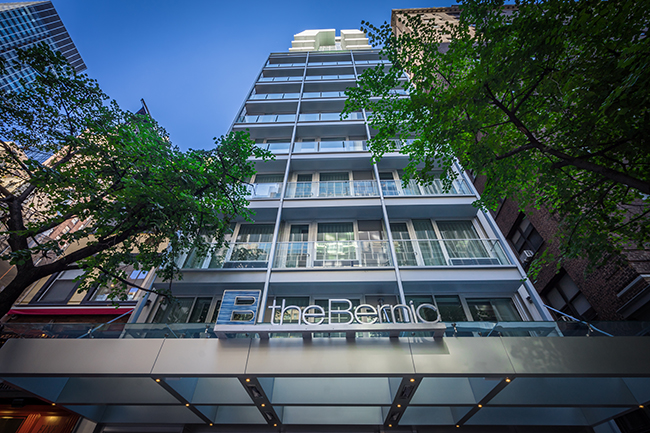
The Bernic Hotel New York City, Tapestry Collection by Hilton
Chicago, Illinois
Since its settlement by Haitian American Jean Baptiste Pointe du Sable, the Windy City has been home to renowned figures like Ida B. Wells, Bessie Coleman, Derrick Rose, Shonda Rhimes and former President Barack Obama, among others.
Things to Do:
- The Museum of Science and Industry’s Black Creativity is the nation’s longest-running exhibition of African American art. Its family-friendly exhibits, events and educational programs expose students to STEM careers through hands-on learning each February.
- About a mile east of the Museum of Science and Industry sits the DuSable Museum of African American History, which shares the story of the African American experience through multi-media exhibits.
- The Pullman District was the first planned industrial community in the U.S., built around the Pullman Car Company where its residents worked. The Pullman National Monument commemorates the nationwide railroad strike against poor working conditions and unfair pay in 1894, giving rise to the African American labor movement.
- The Second City’s annual Black History Month Show brings you decades of sketches created by Second City alumni of color, including Keegan-Michael Key, Sam Richardson and Amber Ruffin.
- When staying in Chicago, former President and First Lady Barack and Michelle Obama call their residence in Kenwood home. Visitors cannot enter but can view the 44th president’s home from the street and stroll through the historic Hyde Park neighborhood with public parks, museums and black-owned businesses.
Where to Stay:
- Retreat to Embassy Suites by Hilton Chicago Downtown Magnificent Mile, which is located in the heart of downtown Chicago, within walking distance of Magnificent Mile shopping and Millennium Park. Guests can enjoy spacious two-room suites, an eco-friendly Sky Garden filled with fresh herbs, free made-to-order breakfast and complimentary drinks and snacks at the Evening Reception.
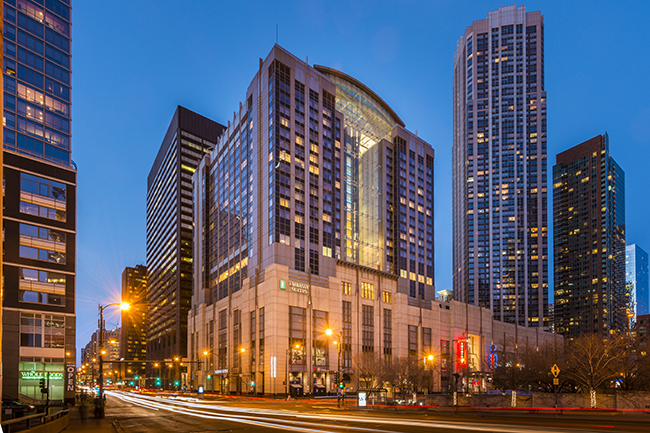
Embassy Suites by Chicago Hilton Downtown
Detroit, Michigan
The Great Migration set the foundation of the African American community in Detroit in the early 20th century. Motor City has been a cultural hub with international influence ever since.
Things to Do:
- The Motown Museum takes you back in time to 1959, when Berry Gordon founded Motown Records Corporation and started the popular genre. Visit the studio where much-loved artists such as The Supremes, The Temptations and Four Tops recorded.
- The Charles H. Wright Museum of African American History is the world’s largest permanent collection of African American culture. Its interactive exhibit, “And Still We Rise: Our Journey Through African American History and Culture,” is not to be missed.
- At the Henry Ford Museum, a different aspect of African American history is explored each week in February. Among the museum’s most notable exhibits is the bus Rosa Parks was on when she was arrested in 1955 for resisting segregation laws.
- The Tuskegee Airmen National Museum commemorates the first African American military pilots during World War II, who were critical to the desegregation of the military.
Where to Stay:
- Located in the heart of downtown Detroit, DoubleTree Suites by Hilton Detroit Downtown – Fort Shelby welcomes guests to the comforts of home with spacious rooms, a fitness center and an onsite restaurant and bar. Within walking distance of museums, dining, theaters and the Detroit River, this hotel is perfect for families or solo travelers.
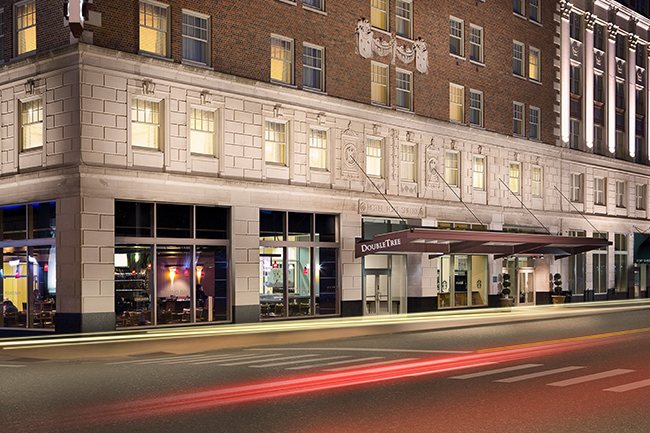
DoubleTree Suites by Hilton Detroit Downtown – Fort Shelby
Los Angeles, California
Los Angeles isn’t just home to Hollywood. It offers state-of-the-art museums, black-owned businesses, historical architecture and more in a nod to local black history and beyond.
Things to Do:
- The California African American Museum pairs history with modern art by California-based artists to create a dialogue about current issues.
- Visit Eso Won Books in Leimert Park, one of the nation’s oldest black-owned bookstores. The bookstore has held signings and discussions from luminary authors, including former President and First Lady Barack and Michelle Obama, Common and Ta-Nehisi Coates.
- The first certified African American architect, Paul Revere Williams designed iconic buildings like the Los Angeles County Courthouse, the Shrine Auditorium and the First AME Church. He designed homes for celebrities Frank Sinatra and Lucille Ball, and more recently, Denzel Washington and Ellen DeGeneres have lived in his homes. Take a drive to see some of his most famous designs.
- If you’re a sports fan, head to Dodger Stadium, home of the Los Angeles Dodgers, to view the statue of Jackie Robinson, the first black man to play Major League Baseball in the modern era, breaking the MLB’s color barrier. Robinson was the first black player to win Major League Baseball’s Most Valuable Player Award in 1949 and to be inducted into the Baseball Hall of Fame in 1962.
- Get away from the city with a visit to Inkwell Beach in Santa Monica Bay. Originally a derogatory name for the segregated beach, “The Inkwell” has been transformed into a badge of pride and continues to be a popular place to relax, swim and surf. View the landmark monument for Nick Gabaldón, the first documented surfer of African and Mexican American descent, on the Oceanfront Walk.
Where to Stay:
- Stay at The Beverly Hilton for a true Hollywood experience. Opened by Conrad Hilton himself in 1955, the hotel is within walking distance of museums, shopping and dining and within driving distance of the Santa Monica Pier and Venice Beach. Relax in suites with panoramic views and indoor-outdoor living spaces and take advantage of hotel amenities like the Olympic-sized Aqua Star Pool and Upgrade Labs, a luxurious health and fitness retreat. Black culture is celebrated here in February as the Beverly Hilton also hosts the annual American Black Film Festival (ABFF) Honors. In June during Black Music Month, the hotel hosts the annual Culture Creators Innovators & Leaders Awards Brunch.
San Francisco, California
Black art and activism have shaped the cultural identity of the Bay Area since the California Gold Rush. San Francisco’s museums, public spaces and events offer an experience unique to any other city.
Things to Do:
- The Museum of the African Diaspora is a must-see, showcasing the history, art and cultural richness of Africans who have migrated throughout the world.
- The African American Art & Culture Complex has been a resource for the arts and African American community in San Francisco since 1989. The complex hosts regular educational events, from panel discussions to family-friendly festivities, so check their schedule in advance of your stay.
- Take a break from the city in the serene Yerba Buena Gardens, home to the second-largest memorial to Martin Luther King Jr. The Martin Luther King Jr. Waterfall features a reflection pool, waterfall and walkway with quotations from King.
Where to Stay:
- Tour the city’s iconic cable cars, theaters, museums and dining, all minutes away from Hilton San Francisco Union Square. The hotel is in the heart of the Theater District and is less than 2 miles from the Museum of the African Diaspora, the African American Art & Culture Complex and the Martin Luther King Jr. Waterfall. At the hotel, guests can enjoy stunning views from Cityscape Lounge, the tallest skybar in San Francisco, in addition to an onsite restaurant, outdoor heated pool, grab-and-go cafe and full-service fitness center.
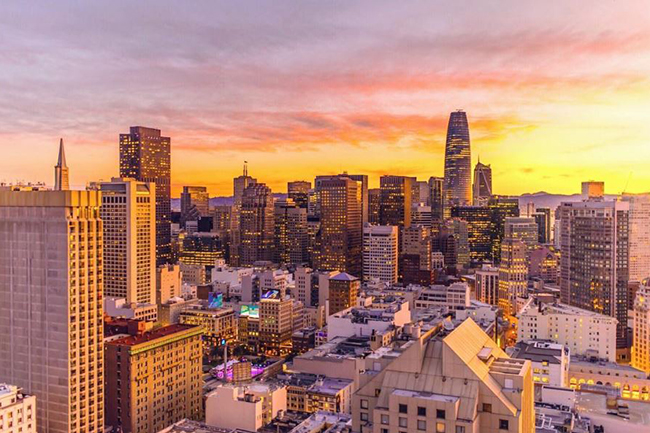
Hilton San Francisco Union Square
Miami Beach, Florida
Miami’s diverse communities helped establish its impressive arts scene more than a century ago, from the public murals in Wynwood and Overtown (once the cultural and commercial center for Miami’s historical black community) to the prestigious annual Art Basel show and American Black Film Festival. Get a taste of the city’s rich art along with its music and culinary scene while learning about the history that shaped them.
Things to Do:
- Get your film fix at the American Black Film Festival, an annual event largely focused on showcasing film and television by and about black people. The weeklong event in June is billed as the nation’s largest gathering of Black film and TV enthusiasts.
- Little Haiti is home to N’NAMDI Contemporary Miami, a modern art gallery owned by Morehouse College graduate and art collector Jumaane N’Namdi. The gallery features the work of black artists from around the world.
- At the House of Mac, try jerk salmon pasta, fried chicken and waffles or Chef Derrick Turton’s self-described “world-famous” mac and cheese.
- The African Heritage Cultural Arts Center hosts countless workshops and events for Miami’s arts community. Its annual “As a Matter of Black” exhibit deconstructs the multiple meanings of the word “black” and runs through mid-March.
- Visit Overtown, which was formerly known as “Colored Town” during the Jim Crow era. The area was once the cultural and commercial center for Miami’s black community and murals by Miami artist Purvis Young line the streets, depicting the hopes and hardships of people in Overtown in bold colors.
- At the Black Archives Historic Lyric Theatre, attend a current show or stand where famous performers once graced the stage, including Nat King Cole, Cab Calloway and Josephine Baker.
- Or, for a full-morning activity, take a Cultural Alliance Heritage Tour through Miami’s neighborhoods, including Little Haiti, Overtown, Coconut Grove Village West, Wynwood and Little Havana. At the end of your educational tour, enjoy a lunch of Southern or Caribbean cuisine, included with the purchase of the tour.
Where to Stay:
- Less than 10 miles from Wynwood, Overtown and Little Haiti neighborhoods is the recently renovated Hilton Cabana Miami Beach, an art deco-style hotel that boasts two oceanfront swimming pools and offers convenient access to South Beach, Lincoln Road and Ocean Drive.
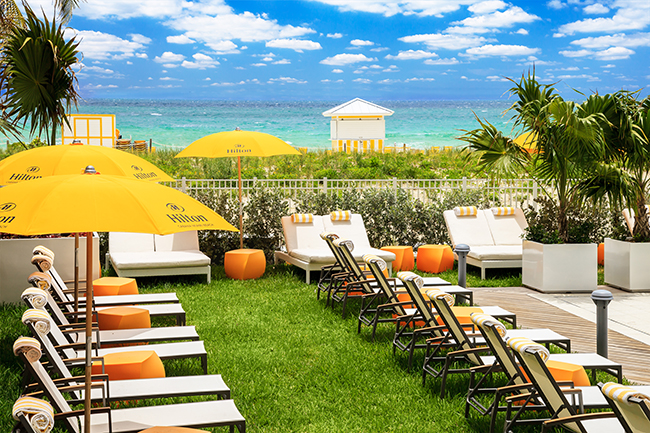
Hilton Cabana Miami Beach
